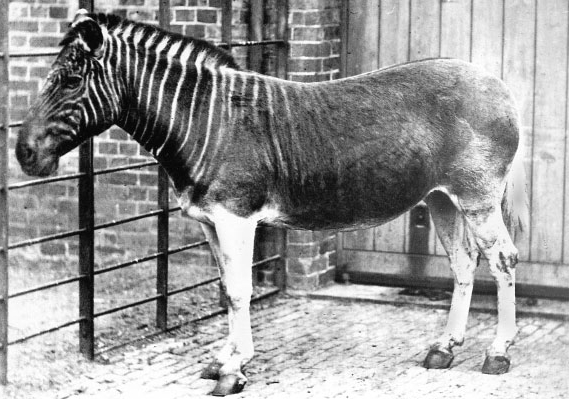The only Quagga that was ever photographed was a mare at the London Zoo in 1870. I don't know the subsequent history of that specimen and whether its skeleton or skin was preserved. The fact that this photo down below is, among others that were shot at the same time, the only photo that shows a living and healthy Quagga inspired me to use this for a life restoration.
I did it by painting it directly on the photograph using GIMP, to be as accurate as possible. I am really happy with the outcome, I think it might provide a lively picture of what this particular animal looked like in life.
Another good basis for a life restoration is the specimen down below:
It is the skin of the alleged last Quagga and is the least discoloured as far as I know.
Most Quagga reconstructions only show single individuals, so I plan to do a coloured drawing of a whole herd in their natural environment as well, showing them doing what they normally did.




I've heard recently, probably in the past couple of month, that zebras may have developed their stripes to ward off biting insects.
ReplyDeletehttp://www.bbc.com/news/science-environment-26871586
If that is true, it makes me wonder why the Quaggas stripes would have been less developed than other plains zebras sub species.
This hypothesis is all but new, but quite convincing. Previously I was not convinced of it because there isn't really a correlation between the range of tse tse flies and that of the zebras, but this might have been different in the past.
DeleteI think there are three possibilities why the Quagga had that reduced striping: a) different habitat. b) that insect hypothesis. c) genetic drift.
Dont know how to mail you (cant find the e-mail button) but: There are some Tauros clips on the site 'dwaalfilm'. I dont know if they are new, but here they are:
Deletehttp://www.dwaalfilm.eu/tauros_fokprogramma
http://www.dwaalfilm.eu/tauros_familieleven
http://www.dwaalfilm.eu/taurossen_winter
Thanks! Very nice videos.
Delete